
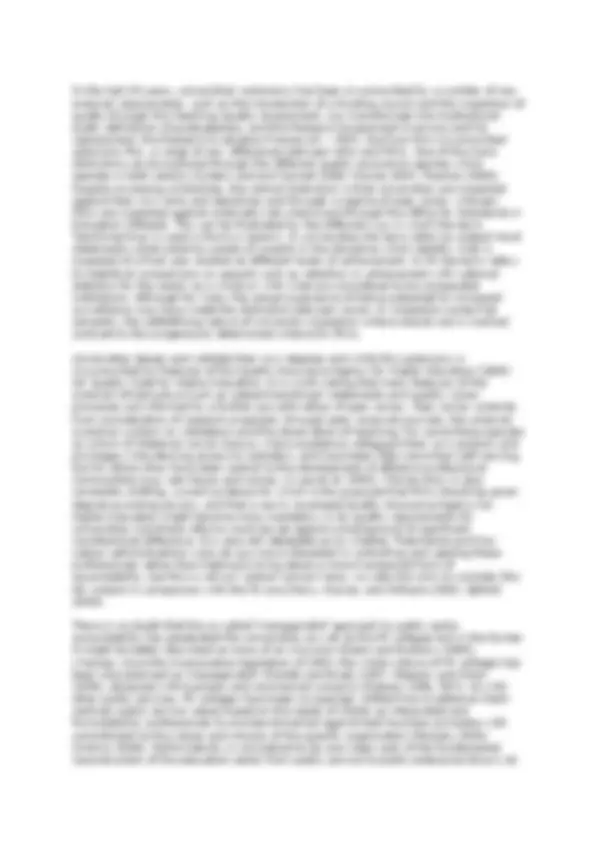
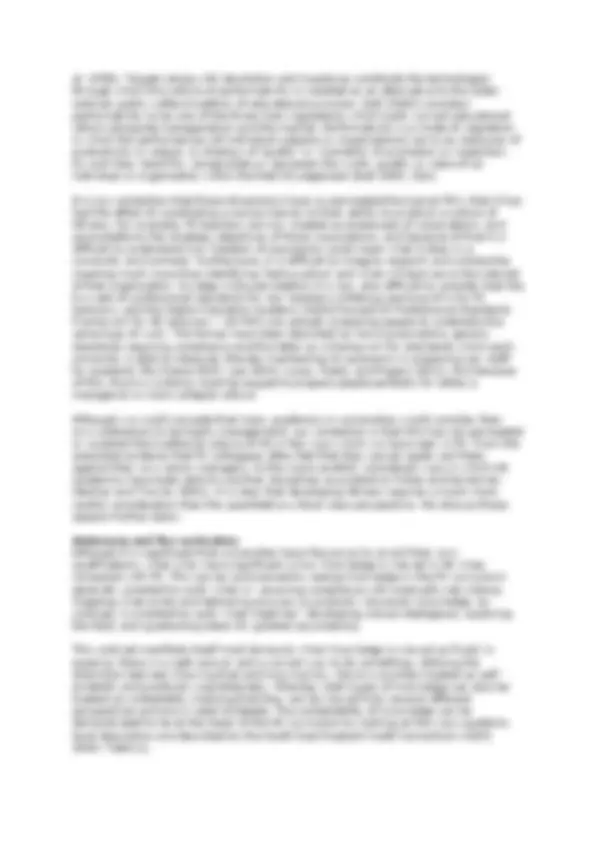
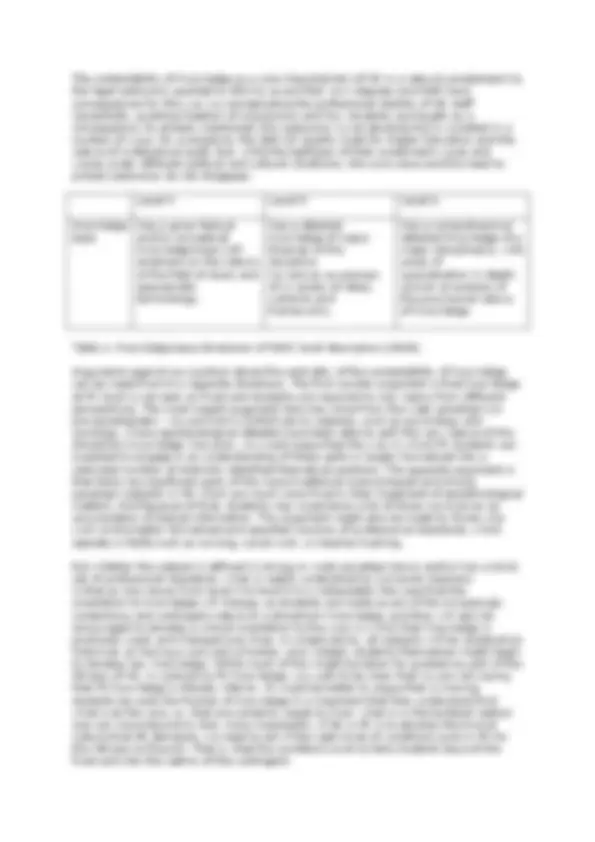
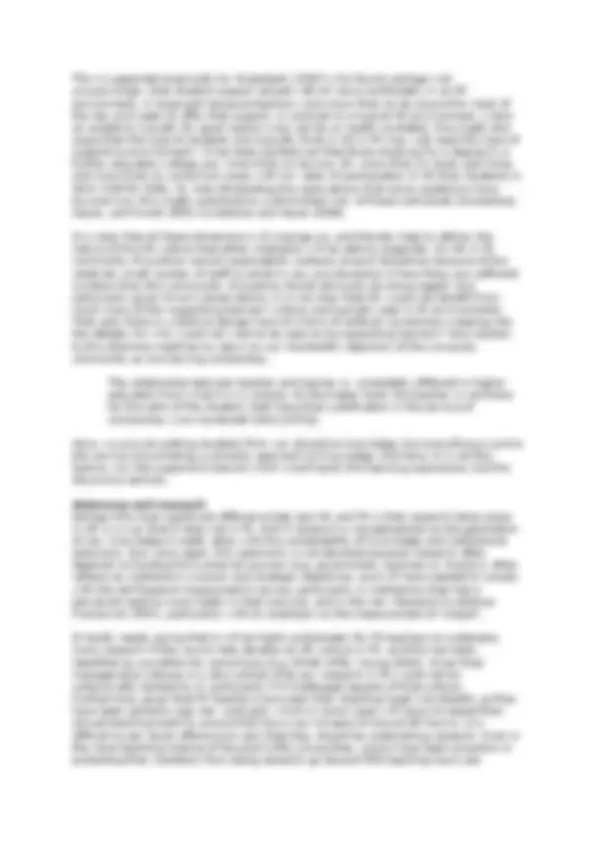
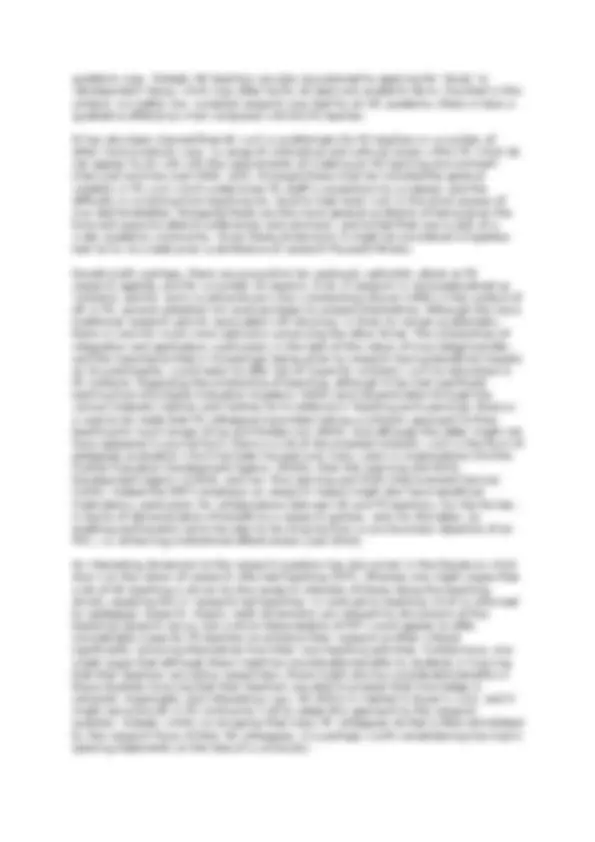
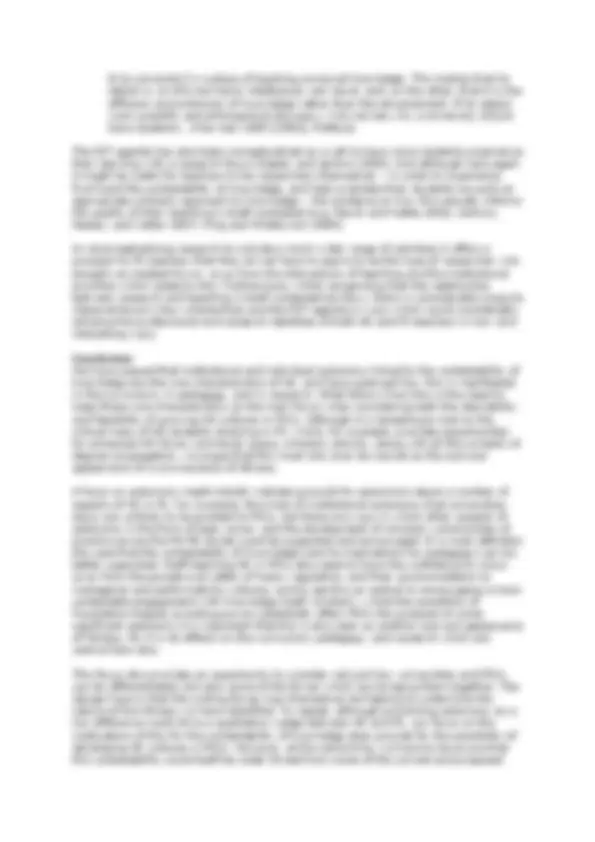
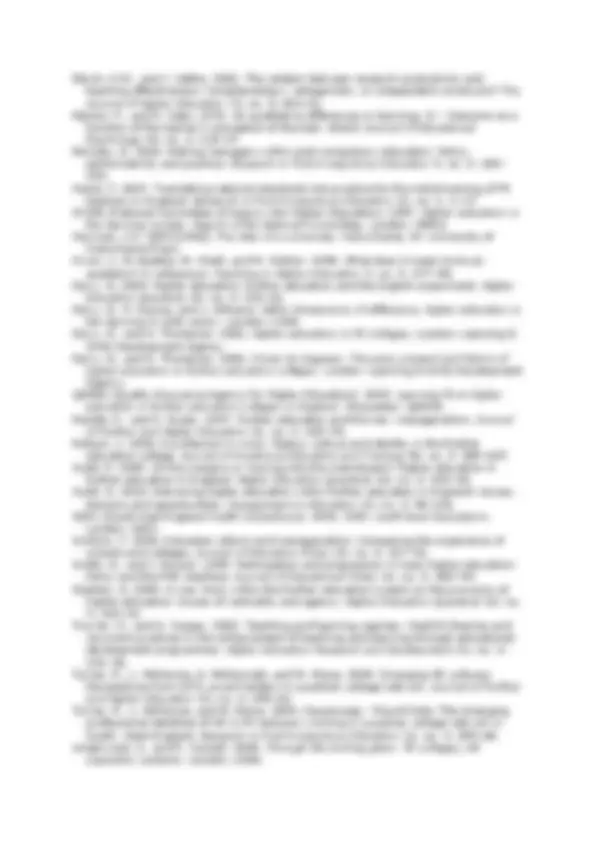



Study with the several resources on Docsity

Earn points by helping other students or get them with a premium plan


Prepare for your exams
Study with the several resources on Docsity

Earn points to download
Earn points by helping other students or get them with a premium plan
Community
Ask the community for help and clear up your study doubts
Discover the best universities in your country according to Docsity users
Free resources
Download our free guides on studying techniques, anxiety management strategies, and thesis advice from Docsity tutors
The integration of higher education (HE) in Further Education Colleges (FECs) in the UK, focusing on the qualitative dimensions of 'HEness'. The authors argue that while the political priority of widening participation has led to an increase in HE in FECs, the cultural differences between HE and FE institutions require further scrutiny. Key themes include institutional autonomy, the role of FE teachers, and the implications of a critical mass for HE in FE.
Typology: Lecture notes
1 / 14

This page cannot be seen from the preview
Don't miss anything!









Research in Post-Compulsory Education Higher education in further education:capturing and promoting HEness John Lea a & Jonathan Simmons b a Learning and Teaching Enhancement Unit, Canterbury Christ Church University, Canterbury, UK b Learning and Development Centre, University of the West of England, Bristol, UK
To cite this article: John Lea & Jonathan Simmons (2012): Higher education in further education: capturing and promoting HEness, Research in Post-Compulsory Education, 17:2, 179-
(Received 3 August 2011; final version received 2 October 2011)
This article discusses the implications of continuing to support the delivery of higher education (HE) in further education (FE) settings. Although a critical mass of students studying HE in Further Education Colleges (FECs) is significant in sustaining the viability of the provision, we argue that the qualitative dimensions to ‘capturing HEness’ are in need of further critical scrutiny. This is undertaken by highlighting the importance of institutional and individual autonomy in maintaining an HE culture, with specific reference to the curriculum, pedagogy, and research. Throughout, some key similarities and differences between HE and FE organisational practices and cultures are identified, and the various pressures which are simultaneously pulling the two apart, and together, are analysed. The article concludes by arguing that there are some grounds for cautious optimism but we must be mindful that both FE and HE need to retain practices and a culture, without which the essence of HEness could be compromised in both settings.
Keywords: higher education culture; further education; HEness
Introduction In the UK FECs (Further Education Colleges) have provided higher education in a variety of forms since the 1950s (Parry and Thompson 2002). Government policy on the status and size of HE in FE has been driven in different directions as the result of other educational and social policies. There has been terminological confusion as a result of legislative change; different policy drivers for the different sectors; changes to the quality assurance arrangements; and confusion over who funds what: ‘HE [higher education] in FECs operates at a funding and administrative boundary, which has meant that neither HEFCE [the Higher Education Funding Council for England] nor the LSC [Learning and Skills Council] have taken the strategic overview of the provision that is now warranted’ (HEFCE 2006, 11; see also Parry 2009, 35; Scott 2009, 2010; Stanton 2009).
In the mid-1990s, a crisis of funding in both the further and higher education sectors brought an end to the ability of higher education institutions (HEIs), by themselves, to continue to absorb the anticipated growth of student numbers. As a result of the Dearing report (NCIHE 1997) and the Kennedy committee for FE (Kennedy 1997), HE in colleges began to take a higher status as a political priority in terms of increasing collaboration between the sectors within the framework of widening participation. However, the two sectors remained separate:
a continuing duality in the formation and implementation of policy as well as in the planning, funding and quality arrangements for each sector was to remain a characteristic feature of attempts to develop higher education in the context of further education. (Parry and Thompson 2002, 35)
As a result, the policy goals for HE in FE remained ‘in pursuit of short-cycle higher education’ (Parry and Thompson 2002, 3).
However, the role and importance of HE in FE was given a new impetus by the 2003 White Paper (DfES 2003) with its proposal for: ‘the expansion of two-year work- focused foundation degrees…[which] will often be delivered in Further Education colleges’ (DfES 2003, 57). Indeed: ‘Further Education colleges already play an important role in delivering higher education – they currently deliver 11 per cent of higher education’ (DfES 2003, 62). And this has been given a further accidental impetus by the current round of UK Coalition Government spending cuts, which is making the lower cost of providing HE in FE appear a very attractive proposition, particularly if it remains desirable to see high student numbers undertaking HE study. The result of all this was neatly summarised in the following:
Despite a long history of higher education in the further education sector, present-day colleges have still to be regarded as normal and necessary locations for undergraduate education. As providers of a limited range of higher level programmes, the institutional choices and economic returns available to these students are different from those who occupy other parts of higher education, although the wider social benefits of participation might be considerable. (Parry 2009, 339)
One of the original priorities in all this was to develop ‘an HE ethos and environment’ (HEFCE 2001, 4) for HE in FE. The Higher Education Quality Council (HEQC) had expressed concern some years earlier, that HEIs needed to pay more attention to the consistency and comparability of ‘the quality demands of their collaborative activity’ (HEQC 1995, 2). And this became a priority for the Development Fund for Learning & Teaching, which began in 2000 and was allocated £9.5 million by HEFCE in its first phase. Its aim was to help FECs to develop their HE programmes and specifically to raise the quality and standards of HE learning and teaching. The list of key emerging themes in the first year of the fund illustrates a shift in thinking about the differences between higher and further education: top of the list of key emerging themes was ‘the implication of a critical mass for HE in FE’ (HEFCE 2001, 4). This is indicative of a shift from conceptualising the differences between higher and further education in qualitative terms towards one in which the sheer number of HE students in an institution is regarded as the key to developing an HE ethos and environment (Turner et al. 2009, 261).
While there are some indicators of what is meant by an ‘HE ethos and environment’, we adopt the position in this article that the qualitative dimension is in need of much further and critical exploration, in order to understand more fully the nature of the HEness that FECs need to capture in their HE work. Several authors have recently explored the wider question of whether HE and FE could become more ‘seamless’ (Smith and Bocock 1999; Marks 2002; Young 2006). Although this notion is relevant we should make it clear that our discussion centres more on HE in FE, rather than HE and FE and whether the two are, or should be, merging. Specifically, we want to consider both the desirability and viability of continuing to develop an HE culture in FE. We will do this by exploring how the notion of autonomy is critical in understanding the nature of the institutions, their curricula, pedagogy, and research.
Institutional autonomy At the heart of the cultural differences between HE and FE is the fact that universities are autonomous institutions in a way that FE colleges are not. Although UK universities have achieved their status in a number of different ways – most notably those that were constituted post- and pre-1992 – and all are constrained by external agencies and professional bodies, at the heart of universities is an autonomy that FECs can never aspire to as they are currently constituted. While FECs are owned by their corporations, universities are constituted in relation to the Privy Council; traditionally FECs award other organisations’ qualifications, universities award their own qualifications; FECs have to work with external validating bodies to construct their curriculum offer, universities are validating bodies: they validate their own awards.
al. 1996). Targets along with devolution and incentives constitute the technologies through which the culture of performativity is installed as an alternative to the state- centred, public welfare tradition of educational provision. Ball (2003) considers performativity to be one of the three main ingredients which typify current educational reform alongside managerialism and the market. Performativity is a mode of regulation in which the performances (of individual subjects or organisations) serve as measures of productivity or output, or displays of ‘quality’ or ‘moments’ of promotion or inspection. As such they stand for, encapsulate or represent the worth, quality or value of an individual or organisation within the field of judgement (Ball 2003, 216).
It is our contention that these dimensions have so permeated the typical FEC, that it has had the effect of constituting a serious barrier to their ability to produce a culture of HEness. For example, FE teachers are now treated as employees of corporations, and accountable to the strategic objectives of those corporations, and because of that it is difficult to understand how freedom of expression could mean what it does in a university environment. Furthermore, it is difficult to imagine research and scholarship meaning much more than identifying ‘best practice’ and what will best serve the interest of that organisation. So deep is the permeation it is now also difficult to consider that the two sets of professional standards for new teachers (Lifelong Learning UK’s for FE lecturers, and the Higher Education Academy [HEA]-housed UK Professional Standards Framework for HE lecturers – UK PSF) are actually preparing people to undertake the same type of work. The former have been described as micro-prescriptive, generic standards requiring compliance and the latter as a framework for standards which each university is able to interpret, thereby maintaining its autonomy in preparing new staff for academic life (Nasta 2007; Lea 2010; Lucas, Nasta, and Rogers 2011). And because of this, the two systems could be argued to prepare people perfectly for either a managerial or more collegial culture.
Although we would concede that many academics in universities would consider their own institutions to be highly managerialist, our contention is that this has not permeated or curtailed the traditional culture of HE in the ways which we have seen in FE. From the anecdotal evidence that FE colleagues often feel that they cannot speak out freely against their own senior managers, to the more carefully considered ways in which HE academics have been able to use their disciplines as protective ‘tribes and territories’ (Becher and Trowler 2001), it is clear that developing HEness requires a much more careful consideration than the quantitative critical mass perspective. We discuss these aspects further below.
Autonomy and the curriculum Although it is significant that universities have the power to award their own qualifications, what is far more significant is how knowledge is viewed in HE when compared with FE. This can be summarised by seeing knowledge in the FE curriculum generally oriented towards ‘what is’: ensuring compliance with externally-set criteria, mapping what exists and delivering answers (a product). University knowledge, by contrast, is oriented towards ‘what might be’: developing critical intelligence, exploring the field, and questioning taken for granted assumptions.
This contrast manifests itself most obviously when knowledge is viewed as fixed; in essence, there is a right answer and a correct way to do something. Utilising the distinction between knowing that and knowing how, the two are then treated as self- evidently and positively unproblematic. Whereas, both types of knowledge can also be treated as contestable, implying that they can be viewed from several different perspectives and are in need of debate. The contestability of knowledge can be demonstrated to be at the heart of the HE curriculum by looking at the ways academic level descriptors are described by the South East England Credit Consortium (SEEC 2004; Table 1).
The contestability of knowledge as a core characteristic of HE is a natural complement to the legal autonomy granted to HEIs to award their own degrees and both have consequences for the way we conceptualise the professional identity of HE staff (essentially, granting freedom of expression) and how students are taught as a consequence. As already mentioned, this autonomy is not absolute but is curtailed in a number of ways, for example by the QAA UK Quality Code for Higher Education and the nature of institutional audit. But, while the tightness of that curtailment waxes and wanes under different political and cultural conditions, the core value and the need to protect autonomy do not disappear.
Level 4 Level 5 Level 6
Knowledge base
Has a given factual and/or conceptual knowledge base with emphasis on the nature of the field of study and appropriate terminology.
Has a detailed knowledge of major theories of the discipline (s) and an awareness of a variety of ideas, contexts and frameworks.
Has a comprehensive/ detailed knowledge of a major discipline(s), with areas of specialisation in depth, and an awareness of the provisional nature of knowledge.
Table 1. Knowledge base dimension of SEEC level descriptors (2004).
Arguments against our position about the centrality of the contestability of knowledge can be made from two opposite directions. The first counter argument is that knowledge at FE level is not seen as fixed and students are required to view topics from different perspectives. The most cogent argument here has come from the weak paradigm (or pre-paradigmatic – to use Kuhn’s [1962] term) subjects, such as psychology and sociology, where epistemological debates have been able to split the very nature of the discipline’s knowledge. However, we would argue that the way in which FE students are expected to engage in an understanding of these splits is largely formalised into a restricted number of distinctly identified theoretical positions. The opposite argument is that there are significant parts of the more traditional science-based and strong paradigm subjects in HE which are much more fixed in their treatment of epistemological matters. And because of that, students may experience a lot of those curricula as an accumulation of factual information. This argument might also be made by those who work to the tightly formalised and specified versions of professional standards, which operate in fields such as nursing, social work, or teacher training.
But whether the subject is defined in strong or weak paradigm terms and/or has a strict set of professional standards, what is readily understood by university teachers is that as one moves from level 4 to level 8 it is indisputably the case that the orientation to knowledge will change, as students are made aware of the increasingly contentious and contingent nature of a discipline’s knowledge, and they will also be encouraged to develop a critical orientation to the ways in which that knowledge is produced, used, and changed over time. In simple terms, all subjects will be rendered as historical, as having a core and a frontier, and, indeed, students themselves might begin to develop new knowledge. Whilst much of this might be taken for granted as part of the HEness of HE, in contrast to FE knowledge, we want to be clear that we are not saying that FE knowledge is thereby inferior. It would be better to argue that in moving students towards the frontier of knowledge it is important that they understand first what is at the core, or, that one certainly needs to know what is in the textbook before one can move beyond it. But, more importantly, if HE in FE is to develop the kind of culture that HE demands, we need to ask if the right kinds of conditions exist in FE for this HEness to flourish. That is, that the conditions exist to take students beyond the fixed and into the realms of the contingent.
significantly help to differentiate the nature of the HE qualifications, these are all surely the outward appearances of that essence one is trying to capture. Indeed, the very presence of these outward appearances might unwittingly contribute to the disguising and distortion of that essence.
Capturing this essence is complicated by the desire in all sectors of education to produce independent learners. But the focus of this autonomy is different in the different phases. If we look at the SEEC (2004) level descriptors in more detail we can see that support for students is still required at the higher levels but the focus of that support shifts (Table 2).
Level 4 Level 5 Level 6
Management of information
Can manage information, collect appropriate data from a range of sources and undertake simple research tasks with external guidance.
Can manage information; can select appropriate data from a range of sources and develop appropriate research strategies.
Can select and manage information, competently undertaking reasonably straight- forward research tasks with minimum guidance.
Table 2. Management of information dimension of SEEC level descriptors (2004).
If we examine the nature of that student support at a more institutional level we can also see that this is one of the ways in which HE is actually becoming more like FE. One of the backwash effects of league tables is that universities are more affected by their students’ relative success in terms that will be familiar in FE: retention, achievement, success and employability. In the same way as FE has had to pay more attention to student support so HE is beginning to have to as well. This is most particularly the case in the significance currently being given to the annual data generated by the HE National Student Survey (NSS). And herein there is a struggle going on between those who would see students as customers and those who would see them as co-producers (Cuthbert 2010). Or, education is an active process; it’s something you do, not something you get. An alternative approach, which would maintain the traditional HE approach, is to argue that whereas students might need a high degree of support particularly in the first year, this support is clearly grounded in providing a steer towards a distinct orientation to knowledge. However, those teaching HE in FE may have, in the process of grappling with all this, developed their own form of hybrid pedagogy, where HE is delivered within the constraints imposed on it by the more predominant FE culture (Edward et al. 2007; Golding Lloyd and Griffiths 2008; Turner, McKenzie, and Stone 2009).
Despite the rhetoric concerning the central importance of ‘the student experience’ throughout post-compulsory education, there is a lot of support for the view that HE academics have tacit but strong allegiances to distinct teaching and learning regimes (TLRs) (Trowler and Cooper 2002), and, allied to that, tend to see their discipline as the main focus of their attention and identity. This might be considered a selfish or self-regarding position, particularly when contrasted to FE where the learner is always (perhaps rhetorically) put first, or where an other-regarding ethos permeates all activities:
…the traditional notion of academic freedom as the academic’s right to pursue his or her own research, and to teach according to his or her own interests, is overturned, and replaced with a conception based on interdependence, connectedness and responsiveness to others. (Nixon et al. 1998, 284)
This is supported empirically by Greenbank (2007) who found, perhaps not unsurprisingly, that student support actually did sit more comfortably in an FE environment, in large part because teachers were more likely to be around for most of the day and ready to offer that support, in contrast to a typical HE environment, where an academic (usually for good reason) may not be so readily available. One might also argue that the type of students one typically finds in HE in FE may well need this type of supportive environment: ‘it has been pointed out that those studying for a degree in a further education college are: more likely to be over 25, more likely to study part-time, and more likely to come from areas with low rates of participation in HE than students in HEIs’ (HEFCE 2006, 9). Notwithstanding the reservations that some academics have towards how this might contribute to a diminished view of these individuals (Ecclestone, Hayes, and Furedi 2005; Ecclestone and Hayes 2008).
It is clear that all these dimensions will impinge on, and thereby help to define, the nature of the HE culture that either institution will be able to engender. An HE in FE community of practice cannot meaningfully coalesce around disciplines because of the relatively small number of staff involved in any one discipline (where there are sufficient numbers then this community of practice should obviously be encouraged), but, particularly given Nixon’s observations, it is not clear that HE would not benefit from much more of the ‘supporting learners’ culture one typically sees in FE environments. That said, there is a distinct danger here of a form of political correctness creeping into the debate, for who would not want to be seen to be supporting learners? One solution to this dilemma might be to return to von Humboldt’s depiction of the university community as one serving scholarship:
The relationship between teacher and learner is…completely different in higher education from what it is in schools. At the higher level, the teacher is not there for the sake of the student, both have their justification in the service of scholarship. (von Humboldt 1810 [1970])
Here, we are not putting students first, nor discipline knowledge, but everything is put to the service of promoting a scholarly approach to knowledge. And here, it is not the lecture, nor the supportive tutorial which would typify the learning experience, but the discursive seminar.
Autonomy and research Perhaps the most significant difference between HE and FE is that research takes place in HE in a way that it does not in FE. And if research is conceptualised as the generation of new knowledge it neatly allies with the contestability of knowledge and institutional autonomy. But, once again, this autonomy is not absolute because research often depends on funding from external sources (e.g. government, business or charity); often reflects an institution’s mission and strategic objectives; and will have needed to comply with the old Research Assessment Exercise, particularly in institutions that had a perceived need to score highly in that exercise, and in the new Research Excellence Framework (REF), particularly with its emphasis on the measurement of ‘impact’.
It hardly needs saying that it will be highly problematic for FE teachers to undertake more research if they are to help develop an HE culture in FE, and this has been identified as a problem for some time (e.g. Elliott 1996; Young 2002). Given their managerialist cultures it is also unlikely that any research in FE would not be unfavourably tainted by it, particularly if it challenged aspects of that culture. Furthermore, given that FE teachers have seen their teaching loads rise steadily as they have been asked to sign new contracts, which in some cases will have increased their annual teaching loads to around 830 hours (an increase of around 80 hours), it is difficult to ask (even offensive to ask) that they should be undertaking research. Even in the most teaching-intense of the post-1992 universities, unions have been proactive in protecting their members from being asked to go beyond 550 teaching hours per
It [a university] is a place of teaching universal knowledge. This implies that its object is, on the one hand, intellectual, not moral, and, on the other, that it is the diffusion and extension of knowledge rather than the advancement. If its object were scientific and philosophical discovery, I do not see why a University should have students… (Newman 1854 [1982], Preface)
The RIT agenda has also been conceptualized as a call to have more students experience their learning with a research focus (Healey and Jenkins 2009). And although here again it might be useful for teachers to be researchers themselves – in order to experience first-hand the contestability of knowledge, and help orientate their students towards an appropriate scholarly approach to knowledge – the evidence on how this actually informs the quality of their teaching is itself contested (e.g. Marsh and Hattie 2002; Jenkins, Healey, and Zetter 2007; King and Widdowson 2009).
In reconceptualising research to include a much wider range of activities it offers a prospect to FE teachers that they do not have to aspire to be the type of researcher who ploughs an isolated furrow away from the distractions of teaching and the institutional priorities which relate to this. Furthermore, whilst recognising that the relationship between research and teaching is itself contested territory, there is considerable scope to interpret Boyer’s four scholarships and the RIT agenda in ways which could considerably enhance the professional and research identities of both HE and FE teachers in new and interesting ways.
Conclusion We have argued that institutional and individual autonomy linked to the contestability of knowledge are the core characteristics of HE, and have analysed how this is manifested in the curriculum, in pedagogy, and in research. What follows from this is the need to keep these core characteristics as the main focus when considering both the desirability and feasibility of growing HE cultures in FECs. Although it is tempting to look to the critical mass of HE students studying in FE, which, for example, provides opportunities for enhanced HE library and study space, scholarly activity, along with all the symbols of degree congregation, we argue that this must only ever be viewed as the outward appearance of a core essence of HEness.
A focus on autonomy might initially indicate grounds for pessimism about a number of aspects of HE in FE. For example, the kinds of institutional autonomy that universities enjoy are unlikely to be granted to FECs, but there are ways in which other aspects of autonomy in the form of peer review and the development of scholarly communities of practice across the FE/HE divide could be supported and encouraged. It is most definitely the case that the contestability of knowledge (and its implications for pedagogy) can be better supported. Staff teaching HE in FECs also need to have the confidence to move away from the paradoxical safety of heavy regulation, and their accommodation to managerial and performativity cultures, and to see this as central to encouraging a more contestable engagement with knowledge itself. Similarly, whilst the possibility of Foundation Degree awarding powers potentially offers FECs the prospect of some significant autonomy it is important that this is also seen as another outward appearance of HEness, for it is its effects on the curriculum, pedagogy, and research which are central here also.
This focus also provides an opportunity to consider not just how universities and FECs can be differentiated, but also some of the forces which are bringing them together. The danger here is that the uniting forces may themselves be helping to undermine the nature of the HEness we have identified. To repeat, although prioritising autonomy as a key difference could drive a qualitative wedge between HE and FE, our focus on the implications of this for the contestability of knowledge does provide for the possibility of developing HE cultures in FECs. However, at the same time, we have to be aware that this contestability could itself be under threat from some of the current and proposed
changes to the HE environment. The raising of fees, the increasing use of performance indicators and league tables will increase the ways in which students will be treated as, and behave like, consumers. As government policy increasingly focuses on the instrumental purposes of a degree through, for example, its emphasis on employability, there will be increasing pressures on, and from, students to treat a degree as a product, with a likely consequence that students and staff will move towards a conception of knowledge which is more fixed rather than contestable. In these regards HE is becoming more like FE and there will be those who applaud this. But we should caution against those incursions which impinge on the kinds of autonomy without which we lose the essence of what makes HE higher.
Notes on contributors John Lea is currently the programme director for the Post-Graduate Certificate in Learning and Teaching (HE) at Canterbury Christ Church University. From 2005 until 2011 he was Vice-Chair then Chair of the Universities’ Council for the Education of Teachers (UCET) Post-16 Committee, and he is currently a member of the Executive Committee of the Staff and Education Development Association (SEDA).
Jonathan Simmons has worked in further education teacher training and staff development since the mid-1980s. He is currently leader of the University of the West of England’s Federation of Further Education Colleges and Director of the Academic Development Programme for academic staff new to the university.
References Abbs, P. 1994. The educational imperative: A defence of Socratic and aesthetic learning. London: Falmer Press. Bailey, C. 1984. Beyond the present and particular: A theory of liberal education. London: Routledge & Kegan Paul. Ball, S. 2003. The teacher’s soul and the terrors of performativity. Journal of Education Policy 18, no. 2: 215–28. Barnett, R. 2000. Realizing the university in an age of supercomplexity. Buckingham: Open University Press. Bathmaker, A., and W. Thomas. 2009. Positioning themselves: An exploration of the nature and meaning of transitions in the context of dual sector FE/HE institutions in England. Journal of Further and Higher Education 33, no. 2: 119–30. Becher, T., and P. Trowler. 2001. Academic tribes and territories: Intellectual enquiry and the cultures of disciplines. 2nd ed. Buckingham: Society for Research into Higher Education/Open University Press. Beck, J., and M. Young. 2005. The assault on the professions and the restructuring of academic and professional identities: A Bernsteinian analysis. British Journal of Sociology of Education 26, no. 2: 183–97. Brown, L., T. Seddon, L. Angus, and P. Rushworth. 1996. Professional practice in education in an era of contractualism: Possibilities, problems and paradoxes. Australian Journal of Education 40, no. 3: 311–27. Boyer, E. 1990. Scholarship reconsidered: Priorities of the professoriate. New York: Jossey-Bass. Cuthbert, R. 2010. Students as customers? Higher Education Review 42, no. 3: 3–25. Davies, P. 2007. HE in FE: The struggle for excellence. Academy Exchange 7: 48–9. Deem, R., and K. Brehony. 2005. Management as ideology: The case of ‘new managerialism‘ in higher education. Oxford Review of Education 31, no. 2: 217–35. DfES (Department for Education and Skills). 2003. The future of higher education. Cm
Marsh, H.W., and J. Hattie. 2002. The relation between research productivity and teaching effectiveness: Complementary, antagonistic, or independent constructs? The Journal of Higher Education 73, no. 5: 603–41. Marton, F., and R. Saljo. 1976. On qualitative differences in learning: II – Outcome as a function of the learner’s conception of the task. British Journal of Educational Psychology 46, no. 2: 115–27. Mulcahy, D. 2004. Making managers within post-compulsory education: Policy, performativity and practice. Research in Post-Compulsory Education 9, no. 2: 183–
Nasta, T. 2007. Translating national standards into practice for the initial training of FE teachers in England. Research in Post-Compulsory Education 12, no. 1: 1–17. NCIHE (National Committee of Inquiry into Higher Education). 1997. Higher education in the learning society: Report of the National Committee. London: HMSO. Newman, J.H. 1854 [1982]. The idea of a university. Notre Dame, IN: University of Notre Dame Press. Nixon, J., M. Beattie, M. Challi, and M. Walker. 1998. What does it mean to be an academic? A colloquium. Teaching in Higher Education 3, no. 3: 277–98. Parry, G. 2009. Higher education, further education and the English experiment. Higher Education Quarterly 63, no. 4: 322–42. Parry, G., P. Davies, and J. Williams. 2003. Dimensions of difference, higher education in the learning & skills sector. London: LSDA. Parry, G., and A. Thompson. 2001. Higher education in FE colleges. London: Learning & Skills Development Agency. Parry, G., and A. Thompson. 2002. Closer by degrees: The past, present and future of higher education in further education colleges. London: Learning & Skills Development Agency. QAAHE (Quality Assurance Agency for Higher Education). 2004. Learning from higher education in further education colleges in England. Gloucester: QAAHE. Randle, K., and N. Brady. 1997. Further education and the new managerialism. Journal of Further and Higher Education 21, no. 2: 229–39. Robson, J. 1998. A profession in crisis: Status, culture and identity in the further education college. Journal of Vocational Education and Training 50, no. 4: 585–607. Scott, P. 2009. On the margins or moving into the mainstream? Higher education in further education in England. Higher Education Quarterly 63, no. 4: 402–18. Scott, G. 2010. Delivering higher education within further education in England: Issues, tensions and opportunities. Management in Education 24, no. 3: 98–101. SEEC (South East England Credit Consortium). 2004. SEEC credit level descriptors. London: SEEC. Simkins, T. 2000. Education reform and managerialism: Comparing the experience of schools and colleges. Journal of Education Policy 15, no. 3: 317–32. Smith, D., and J. Bocock. 1999. Participation and progression in mass higher education: Policy and the FHE interface. Journal of Educational Policy 14, no. 3: 283–99. Stanton, G. 2009. A view from within the further education system on the provision of higher education: Issues of verticality and agency. Higher Education Quarterly 63, no. 4: 419–33. Trowler, P., and A. Cooper. 2002. Teaching and learning regimes: Implicit theories and recurrent practices in the enhancement of teaching and learning through educational development programmes. Higher Education Research and Development 21, no. 3: 221 – 40. Turner, R., L. McKenzie, A. McDermott, and M. Stone. 2009. Emerging HE cultures: Perspectives from CETL award holders in a partner college network. Journal of Further and Higher Education 33, no. 3: 255–63. Turner, R., L. McKenzie, and M. Stone. 2009. Square peg – Round hole: The emerging professional identities of HE in FE lecturers working in a partner college network in South- West England. Research in Post-Compulsory Education 14, no. 4: 355–68. Underwood, S., and P. Connell. 2000. Through the looking glass: FE colleges, HE inspection systems. London: LSDA.
Young, M. 2006. Further and higher education: A seamless or differentiated future? Journal of Further and Higher Education 30, no. 1: 1–10. Young, P. 2002. Scholarship is the word that dare not speak its name: Lecturers’ experiences of teaching on a higher education programme in a further education college. Journal of Further and Higher Education 26, no. 3: 273–86.